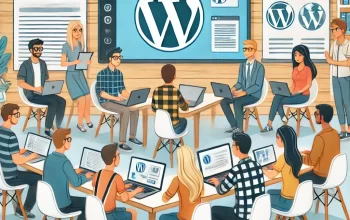In a bold statement that has sparked widespread debate, Klarna CEO Sebastian Siemiatkowski revealed that his company stopped hiring new employees a year ago, asserting that artificial intelligence (AI) can now fill the gaps traditionally filled by human workers. This statement raises critical questions about the future of employment, the role of AI in the workforce, and what lies ahead for workers in a rapidly evolving tech landscape.
Klarna’s Shift to AI-Driven Workforce Management
Siemiatkowski shared that Klarna, the Swedish fintech company known for its payment solutions, has significantly altered its approach to workforce management. Instead of continuing to hire new talent, the company is leveraging AI to handle tasks that would have otherwise required human intervention. According to Siemiatkowski, AI is capable of replacing a majority of the jobs that were once crucial to running the company, allowing Klarna to streamline its operations and reduce the need for additional staff.
Klarna’s strategy is not to lay off employees outright, but to manage workforce reduction through natural attrition. As employees leave the company—whether through resignation, retirement, or other reasons—their positions are not refilled, and AI tools are employed to take on their responsibilities. For the employees who remain, Klarna is offering higher pay and additional perks to maintain motivation and productivity in a more tech-driven work environment.
The Impact of AI on Employment: A Growing Concern
Siemiatkowski’s comments have stirred considerable debate about the broader implications of AI on employment. As AI continues to evolve, many experts believe that it has the potential to replace a wide range of jobs, particularly those that involve routine, repetitive tasks. From customer service roles to administrative work, AI’s ability to automate these functions raises questions about the future of human workers in industries across the board.
While Siemiatkowski’s approach to workforce reduction through AI is focused on replacing roles gradually and offering more attractive conditions to remaining employees, the reality is that this trend could lead to job displacement on a much larger scale. The concern is that as companies adopt AI for more complex tasks, a significant number of workers could find themselves out of a job, leading to economic and social challenges.
The Ethical and Social Implications of AI-Driven Workforce Changes
The use of AI to replace human workers presents both ethical and practical challenges. For one, there are concerns about the fairness of AI replacing jobs without providing adequate support or retraining opportunities for displaced workers. While some companies, like Klarna, may offer higher pay to the remaining employees, the larger question remains: What happens to those who lose their jobs? Is society prepared to address the potential unemployment and income inequality that could result from widespread AI adoption?
Additionally, the shift towards AI raises issues of job quality. While AI might be able to perform many tasks more efficiently than humans, it lacks the emotional intelligence, creativity, and nuanced understanding that many human roles require. For many workers, the emotional and social aspects of their jobs cannot be replicated by machines. This creates a divide between the types of jobs that are most likely to be automated and those that are expected to remain human-centric, such as roles in healthcare, education, and creative industries.
The Future of Employment in the AI Era
The future of work in the AI era remains uncertain. On one hand, AI presents exciting possibilities for improving efficiency, enhancing productivity, and creating new industries. On the other hand, it also poses significant risks of job displacement, widening inequality, and social disruption. As companies like Klarna embrace AI as a core component of their business models, it’s clear that industries will need to adapt to these technological shifts.
For workers, the key to thriving in this new environment will be adaptability and upskilling. As AI takes over more routine tasks, the demand for workers who can operate, manage, and develop AI systems will likely grow. The skills required in the future workforce will focus on creativity, problem-solving, and emotional intelligence—areas where humans still have a competitive edge over machines.
Moreover, governments, educational institutions, and companies must collaborate to ensure that workers are prepared for this transition. Retraining programs, safety nets for displaced workers, and policies that promote responsible AI adoption will be essential in managing the societal impact of this technological revolution.
Conclusion
Sebastian Siemiatkowski’s assertion that AI can replace most human jobs raises important questions about the future of employment. While AI offers undeniable benefits in terms of efficiency and innovation, its potential to disrupt traditional job markets cannot be ignored. As Klarna and other companies turn to AI to manage their workforce needs, society must consider how to balance technological advancement with the preservation of meaningful, well-paying jobs for human workers. The conversation about AI and employment is just beginning, and it will continue to evolve as AI’s role in the workforce expands.






Premayogan, thanks for the dive into how AI will impact careers and employment moving forward. What do you think are some hard skills that will be valuable to focus on moving forward. You mentioned creativity, problem-solving, and emotional intelligence, but what does that translate to in your mind?